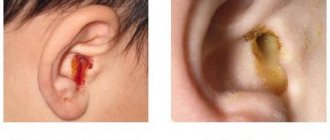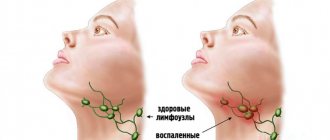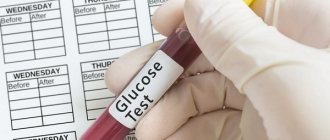An increase in monocytes in the analysis causes concern for patients. Experienced doctors know that the content of only one type of blood cell cannot make any conclusion about the state of health. There are no clear answers to the question of why some cells are increased and others are decreased.
Any changes in blood tests are used as an addition to the symptoms of the disease and are taken into account in differential diagnosis and treatment.
To understand when and in what ways elevated levels of monocytes cause pathology in the body, we need to remember the role of these cells in supporting health.
Basic functions of monocytes
Increased level of monocytes in the blood
Monocytes are single-celled mature leukocytes, formed in the bone marrow, their life expectancy does not exceed three days. In the bloodstream they reach their most active state. Here they grow, function, and after about 70 hours they degenerate into macrophages, after which they penetrate into nearby tissues.
Protective and cleansing – this is their main function. Moving along the blood stream, they find foreign bodies such as cancer cells, infections, viruses, parasites and try to destroy them. To do this, the cell gets close to the detected problem, envelops it with its body, neutralizes it and removes it from the body. In the same way, monocytes destroy bacteria, dead cells and other substances that pollute the human body.
Macrophages act on the same principle, but they take longer to destroy harmful cells.
Monocytes also take part in the synthesis of interferon, which makes cells immune to the virus, thereby enhancing the body’s protective functions.
Thus, an increase in the content of monocytes means that there is a disease that the body is fighting hard against by increasing protective cells.
How is the level of monocytes in the blood determined?
In order to determine the number of monocytes contained in the blood, it is enough to take a general blood test. Monocytes are a type of leukocyte, calculated by a laboratory assistant using a special leukocyte formula. There are two indicators of monocytes:
- Absolute quantity
– designated as “monocytes abs” or “monocytes mono”, the average number of cells per 1 μl (microliter) is taken into account.
- Relative quantity
– designated as “value” ppm/l, calculated as a percentage
Diagnostic value of simultaneous increase in other types of leukocytes
To make a diagnosis in a blood test, it is important to detect not only elevated monocytes, but also other cells of the leukocyte series. Together they:
- indicate the stage of the disease;
- determine the prognosis;
- confirm the type of infectious agent;
- determine the degree of loss of immunity.
Let's look at the most common reactions of blood cells.
Monocytes + lymphocytes
When monocytes and lymphocytes are elevated, an acute viral infection should be suspected: influenza, respiratory disease, measles, rubella, chickenpox. Against this background, a decrease in neutrophils is observed.
It is clear to the doctor that it is necessary to prescribe antiviral drugs.
This is what different types of leukocytes look like under a microscope
Monocytes + eosinophils
For elevated monocytes and eosinophils, the necessary conditions are usually allergic reactions and parasitic infection (chlamydia and mycoplasma).
A distinctive symptom in patients is a long, painful dry cough in the absence of wheezing in the lungs and other clinical manifestations.
Monocytes + basophils
Basophils are fast-reacting cells; they manage to approach the source of infection while others are still “considering the information received.” If monocytes and basophils increase, it is necessary to exclude the influence of long-term treatment with hormonal agents.
The growth of basophils always accompanies an increase in macrophages and lymphocytes. They act by producing serotonin, histamine and other substances that increase inflammation.
When is it necessary to see a doctor and take an OAC test?
There are no specific signs indicating that monocytes are elevated. But at the same time, monocytosis is accompanied by other diseases, the symptoms of which can indirectly suggest changes in the number of leukocytes.
You should consult a doctor and get tested if:
- Decreased or complete loss of appetite.
- Increased fatigue and causeless weakness.
- Aversion to meat dishes.
- Sudden weight loss.
- Insomnia and drowsiness.
- Irritation, apathy, nervous breakdowns.
- Increased psycho-emotional excitability.
- Loud motility of the gastrointestinal tract.
- Constant feeling of anxiety.
- Unexplained pain in the abdomen.
- Panic attacks.
- The appearance of foamy stools.
- Stool disorders.
- The appearance of pain in joints and muscles.
- Bloody impurities in the stool.
- The appearance of acne on the mucous membranes.
- Skin rashes.
- The presence of a long dry cough with bloody sputum.
- Rashes and redness on the genitals, as well as in case of heavy discharge from the genital tract.
- Discomfort and pain during sexual intercourse.
Deviations and normal values
In the period from birth to the age of 16 years, the norms of monocytes in the blood change. Absolute values generally decrease, in contrast to relative values, which up to 16 years of age can either decrease or increase.
| Person's age | Norm of MON parameters |
| In a newborn | 3-12% |
| First two weeks of life | The indicator increases to 5-12% |
| By the year | Decreases 4-10% |
| By 2 years | Is 3-10% |
| From 3 to 16 years old | The lower limit remains 3%, and the upper limit is reduced to 1% |
| From 16 years to old age | from 3-11% |
Absolute indicators from birth to 16 years should decrease, initially ranging from 1.9-2.4 million/l, ultimately decreasing to 0.004-0.08 million/l
A reduced level of monocytes in the blood is called monocytopenia, an increased level is called monocytosis.
The focus of inflammation and an increased level of monocytes in the transcript will be designated as mono. Absolute monocytosis is an increase in the absolute number of monocytes.
The percentage change in monocytes relative to the total number of leukocytes is called relative monocytosis. From time to time, this indicator may increase as a percentage for various reasons, for example, a very hearty breakfast. That is why minor deviations from the norm have no diagnostic value.
But an increase in white cells in the range of 13-17% may indicate a focus of inflammation, and an indicator of 18-24% indicates a serious infectious-inflammatory process.
Causes of increased monocytes
Absolute monocytosis can develop in an adult in the following cases:
- For chronic intestinal diseases such as Crohn's disease, ulcerative colic, inflammation of the small intestine.
- Severe chronic diseases: rheumatoid or psoriatic arthritis, lupus erythematosus.
- Poisoning with substances containing: phosphorus, chlorine or their compounds.
- Infections with infectious diseases: brucellosis, syphilis, salmonellosis, tuberculosis, chickenpox, dysentery, rubella, influenza, whooping cough.
- Rheumatological diseases.
- Rheumatism, endocarditis.
- Blood diseases: chronic myeloid leukemia, osteomyelofibrosis, polycythemia, thrombocytopenic purpura, acute leukemia.
- The development of sepsis or the presence of purulent foci.
- Penetration of parasites and viruses into the body.
- Injury
- Malignant neoplasms of the lymphatic system: lymphoma, lymphogranulomatosis.
- Myocardial infarction.
- Development of fungal diseases.
Also, an excess of the norm of monocytes is observed in patients during the postoperative period and during the recovery period after infectious diseases. Lack of sleep, stress, a rich meal before taking the test, and excessive physical activity can cause an increase in monocytes. Therefore, it is necessary to take this data into account when taking the OAC.
In men
There are no specific reasons for increasing the level of monocytes in men. Men who often experience stress, work a lot, and work is closely related to mental stress and excessive nerves can suffer from monocytosis.
Among women
Elevated monocytes in a woman’s body indicate the presence of infectious diseases, as well as various inflammatory processes. The norms of leukocyte deviation do not depend on gender, however, in women, unlike men, monocytes can increase due to the characteristics of the reproductive system: during menstruation or ovulation, this is associated with a hormonal surge.
In pregnant women
During pregnancy and lactation, the level of leukocytes is especially important for a woman’s body. This is due to the fact that now the protective function must be performed not only for the matter, but also for the fetus inside it, and after the baby is born, they help the woman regain strength faster. During pregnancy, a restructuring of the immune and endocrine systems occurs in a woman’s body, and hormonal levels often change, so the ratio of all types of leukocytes changes.
The level of lower monocytes in the first trimester of pregnancy drops to 1%. But after just a few weeks it increases again to 3%, this figure remains until the last trimester, in which, due to changes in hormonal levels in connection with the body’s preparation for childbirth, the level of monocytes may increase. Immediately after childbirth, the level drops, but later rises again, which means that the body has begun to recover after childbirth.
In children
The normal levels of monocytes in the blood of children are higher than those of adults; the highest levels are observed in newborns. However, there is nothing to worry about if the age norms are not exceeded or the deviation level is not higher than 10%. An increase in this indicator may indicate the presence of infectious or viral diseases or infection with helminths. Often the reason for an increase in leukocyte levels can be the replacement of baby teeth with molars, this is associated with the formation of new tissues.
Also, an increase in monocytes may be associated with hereditary factors, the postoperative period and the presence of more severe diseases, for example, leukemia. It is worth noting that children often experience a low level of leukocytes (monocytopenia) than monocytosis; this is more dangerous and may indicate exhaustion of the body and weak resistance to harmful factors.
When is monocytosis not dangerous?
A harmless moderate increase in monocytes can occur against the background of a decrease in lymphocytes and eosinophils. Similar situations are possible with a severe allergic reaction, in the initial stage of childhood viral acute infections (whooping cough, scarlet fever, chicken pox, measles).
An allergic reaction to the skin is accompanied by monocytosis
Significant death of other immune cells occurs. Therefore, the body produces more phagocytes for compensatory purposes to close the gap in protection.
After 2–3 days, with an uncomplicated course of the disease, the required level of eosinophils and lymphocytes is restored. Elevated monocytes during the recovery period are even considered a positive prognostic sign.
Why is an increase in monocytes dangerous?
An increase in monocytes in the body in most cases indicates the presence of pathology. When an infectious disease appears, the body begins a stubborn fight against it by additionally producing white cells to actively fight the disease. It seems that the more monocytes, the better, because this way you can quickly cope with the disease. In fact, there is a downside, since an excessive amount of them can itself provoke inflammation.
Large accumulations of white bodies in the vessels can:
- Disrupt blood flow.
- Strengthen atherosclerosis.
- Reduce blood flow to the heart muscle.
- Cause damage to the vessel wall.
Indications for analysis
To determine the number of monocytes, a general blood test with a complete leukocyte formula is prescribed. This diagnostic method is carried out by collecting capillary blood from a finger or by taking venous blood. A general blood test is recommended for all patients visiting a clinic or hospital.
The study of monocyte levels is carried out in the following cases:
- for viral or bacterial pathology;
- in the presence of oncological tumors;
- for autoimmune systemic diseases, for example, if rheumatoid arthritis is suspected;
- in pathological conditions of the body’s circulatory system, for example, leukemia;
- in an anemic state;
- if parasitic infestations in the body are suspected, for example, brucellosis;
- for inflammatory diseases of the gastrointestinal tract, for example, colitis.
Preparing for a blood test to determine your monocyte level
Preparing for a general blood test does not require adherence to strict preparatory rules. The patient is advised to come for blood donation in the morning on an empty stomach. The term “on an empty stomach” means limiting food intake at least four hours before the procedure. In addition, you should avoid fatty and fried foods and drinking alcohol on the eve of the test. It is worth protecting yourself from unnecessary stressful experiences or increased physical activity some time before the procedure.









